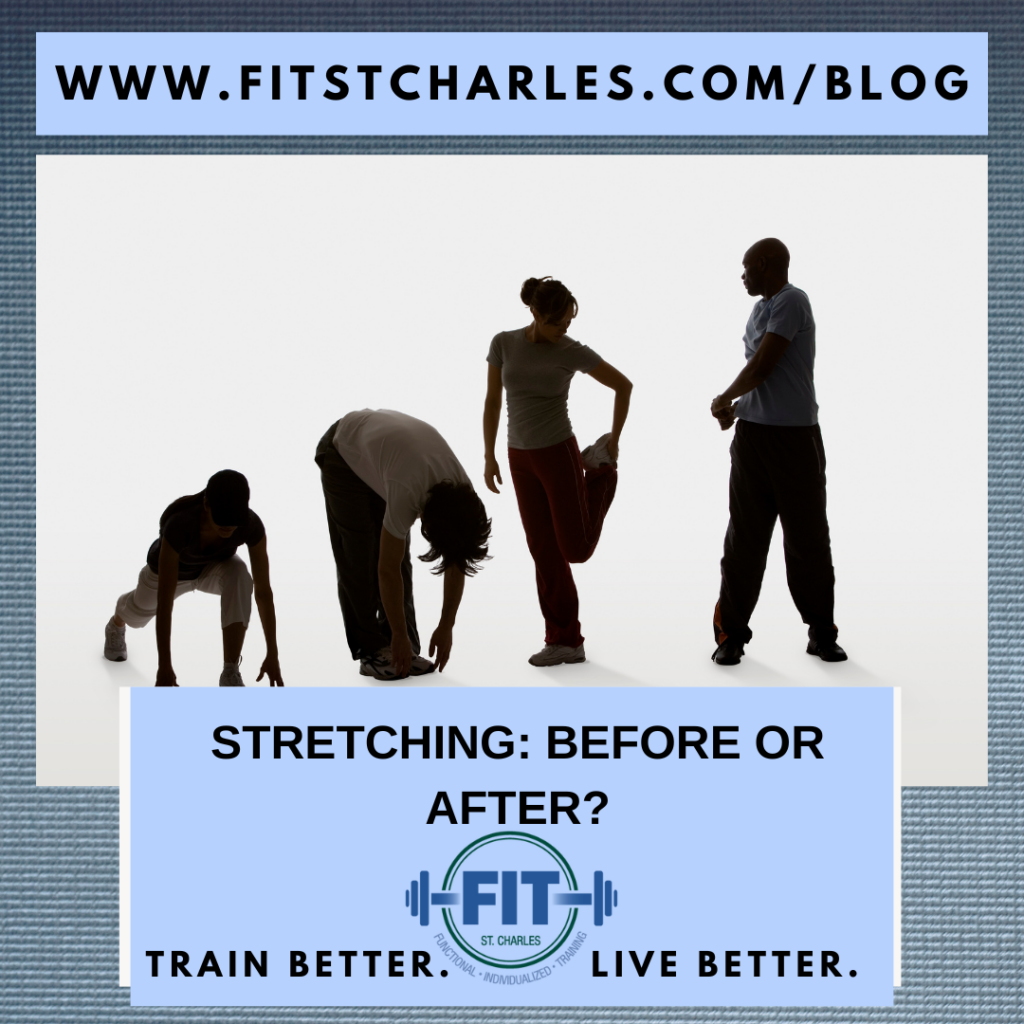
Stretching is an essential part of any fitness plan. I’m sure you’ve heard that you should stretch before a workout and probably heard the contradiction- it’s better to stretch after a workout. We are here to end this argument, but first, why stretch at all?
Stretching is good for flexibility, obviously. Increased flexibility helps your muscles and joints go through a full range of motion without pain. It’s easier to reach that top shelf or bend to pick something off the ground, for example. Stretching is also relaxing. It can help build a better mind-body connection, and it makes us take a moment to focus on controlled movements. It can reduce pain as well, especially if that pain is related to decreased range of motion during daily activities. It can also help improve athletic performance and help prevent injury. But the type of stretching you do determines when to do it.
There are two types of stretches: static stretches and dynamic stretches. Static stretches are what most people think of when they say “stretching.” This is a position that you hold for a set amount of time, ideally 15-45 seconds. Think of touching your toes or a position like downward dog. These types of stretches lengthen your muscles. Dynamic stretching, on the other hand, is movement-based. Most people would call this type of stretching “warming up” for a workout. Think arm circles, high knees, or side lunges. This type of stretch loosens up your muscles and joints by taking them through their full range of motion, “warming” them up. They are both beneficial!l And yes, we think that there’s an order that’s best to do them in.
Dynamic stretching, which helps improve performance and prevent injury during your workout, is best done before you exercise. Loosening up your muscles and tendons before your workout, especially if you are weightlifting, is important. Taking your muscles and joints through a full range of motion helps them distribute weight and force more evenly, resulting in better performance and injury prevention! Remember, dynamic stretching means movement. Gentle, easy movements that warm your muscles and prepare them for more complex, faster, and harder movements during your workout. That’s why we call it a “warm-up”!
Static stretching, which improves flexibility, promotes relaxation, increases mind-body connection, and can reduce pain, is best saved for after your workout. In fact, you’ll get a deeper stretch if you save static stretching for after! Moving your body, especially if you live a relatively sedentary lifestyle, helps to reduce pain in general, but static stretching particularly helps with flexibility. The better the stretch, the more benefit your body receives, which it why we like to leave it for after exercise, since muscles are primed to get the best stretch! Plus, who doesn’t like to cool down with some mindful yoga?
We like to do a quick warm-up (dynamic stretching), work out, and then do some static stretching afterward!
